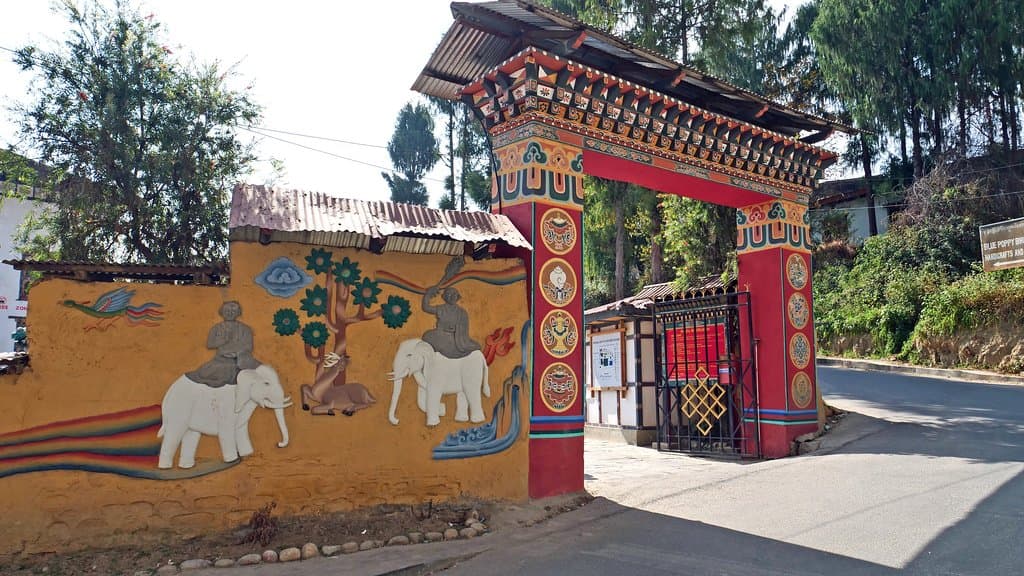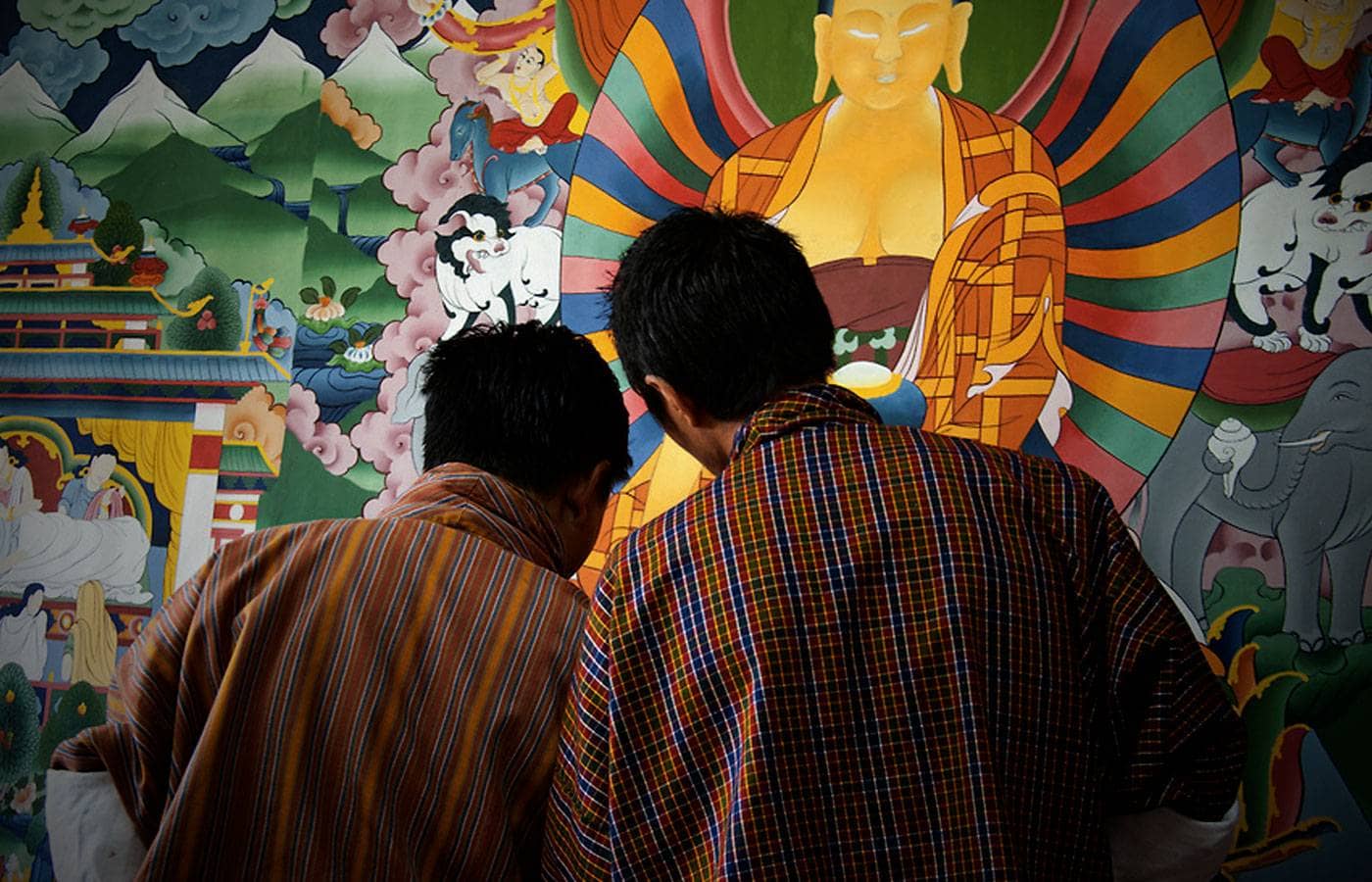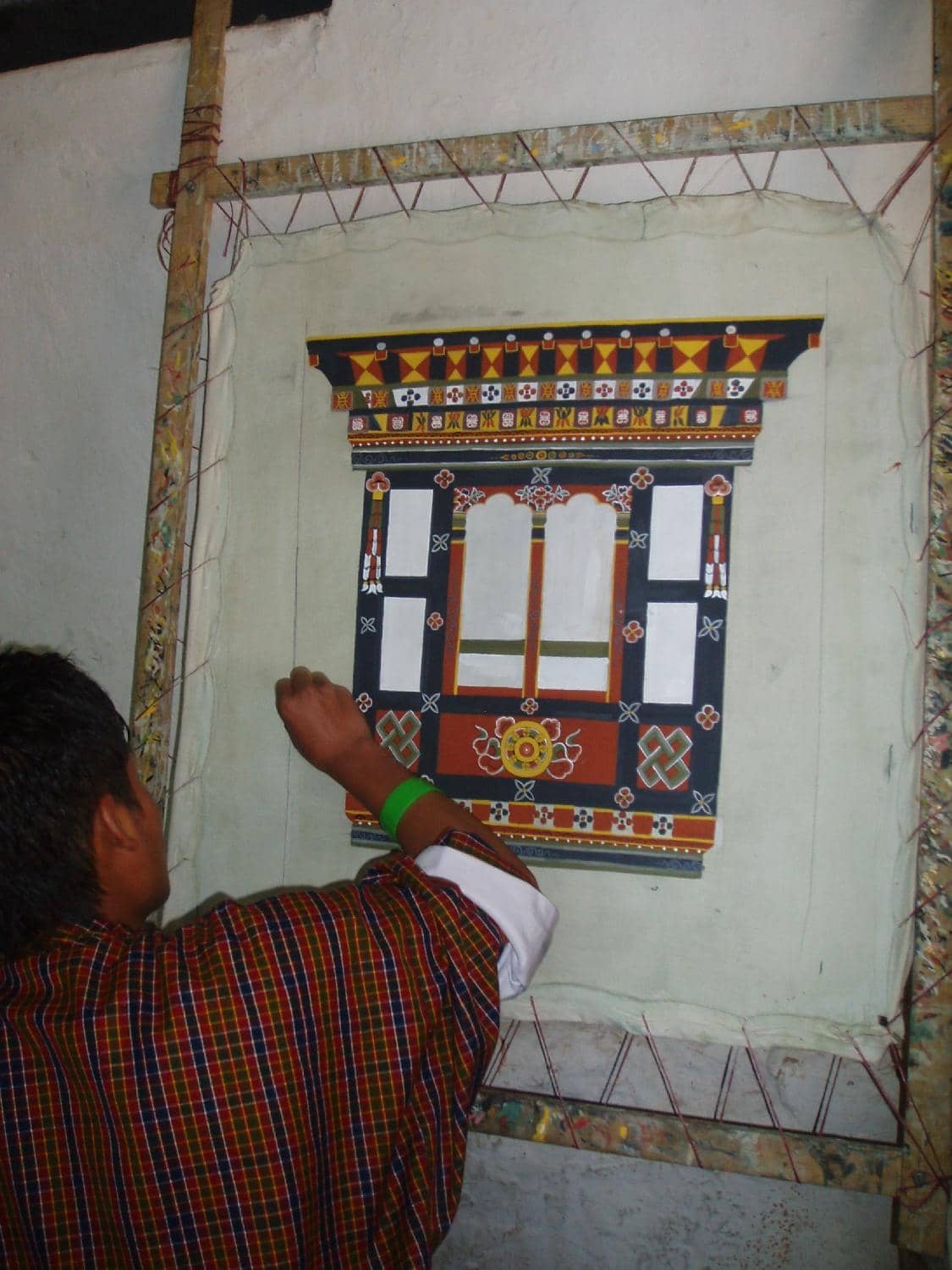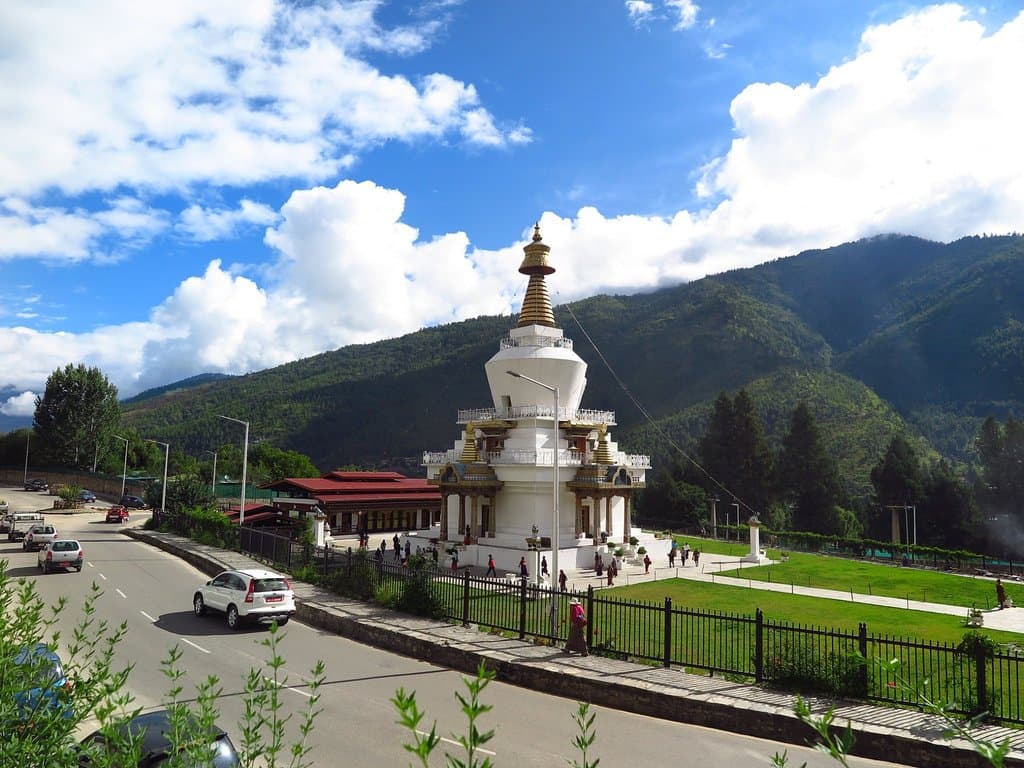
National Institute for Zorig Chusum Thimphu Bhutan
Witness Bhutan's 13 traditional arts come alive as students hone their skills in painting, sculpture, and more.

Highlights
Must-see attractions

Social
From TikTok & Reddit
Best Time
See students actively learning

National Institute for Zorig Chusum Thimphu Bhutan
Best Time
See students actively learning

Highlights
Must-see attractions
Witness Bhutan's 13 traditional arts come alive as students hone their skills in painting, sculpture, and more.
"Jaw-dropping student work showcases the appreciation for overlooked life skills."

🤫 Maintain Silence
It's a school! Keep noise to a minimum to respect the students' concentration.
💰 Entry Fee
A small entry fee of 300 Ngultrum is required for visitors.

Highlights
Discover the most iconic attractions and experiences

Traditional Arts & Crafts
Witness students mastering 13 traditional Bhutanese arts, from painting to sculpture.

Live Demonstrations
Observe skilled students demonstrating techniques in figure painting and portrait study.

Diverse Vocational Training
See a range of crafts including mask making, tailoring, and sculpting in progress.
Plans like a pro.
Thinks like you
Planning Your Visit
Respect the Learning Environment
Timing is Key for Observation
Best Times
Insider Tips
from TikTok, Instagram & Reddit
🤫 Maintain Silence
It's a school! Keep noise to a minimum to respect the students' concentration.
💰 Entry Fee
A small entry fee of 300 Ngultrum is required for visitors.
🚗 Parking Available
Convenient parking is available on-site for visitors.
🎨 Observe the Crafts
Focus on observing the students' work in painting, carving, and other traditional arts.
Tips
from all over the internet
🤫 Maintain Silence
It's a school! Keep noise to a minimum to respect the students' concentration.
💰 Entry Fee
A small entry fee of 300 Ngultrum is required for visitors.
🚗 Parking Available
Convenient parking is available on-site for visitors.
🎨 Observe the Crafts
Focus on observing the students' work in painting, carving, and other traditional arts.
What Travellers Say
Reviews Summary
Visitors find the Institute for Zorig Chusum to be a valuable place to witness the preservation of Bhutan's traditional arts and crafts. The quality of work by students is often praised, offering a unique glimpse into vocational training. However, some find it less engaging if they expect more interaction or find the silence requirement restrictive.
"This place is also known as Institute for Zorig Chusum. Here students are taught courses like traditional drawing, painting, carving and to develop skills in arts and crafts.
Few of us went around this place.
We can’t interact with the students; we can only observe them working.
We have to maintain pure silence here.
Parking space is available"
Arun Kumar
"Well worth a visit, while it’s a school to teach traditional arts, the quality of the work these students, just starting on their learning journey, is impressive."
Stuart Ralls
"A time consuming but worth a visit after payment of 300 entry fees.
Mask making..tailoring..sculpture..painting..lot of vocat ional training given to kids after high school.
Excellent campus..and state of art training."
Dr.Mohina S Kulkarni
What People Like
What People Dislike
Frequently Asked Questions
🚇 🗺️ Getting There
The institute is located in Thimphu, Bhutan. Taxis are readily available and are the most convenient way to reach the institute. If you're exploring Thimphu, it's often part of a broader cultural tour.
Yes, parking is available at the institute, making it convenient for visitors arriving by car or taxi.
🎫 🎫 Tickets & Entry
The entry fee is 300 Bhutanese Ngultrum per person. It's a small price for a unique cultural experience.
The institute operates during school hours to allow visitors to observe students at work. It's best to visit on weekdays during the day.
Interaction with students is generally limited to observation to avoid disrupting their learning environment. The focus is on appreciating their skills.
🎫 🎨 Onsite Experience
The institute teaches 13 traditional Bhutanese arts and crafts, including painting, sculpture, wood carving, embroidery, mask making, and tailoring.
You can expect to see students actively engaged in learning and practicing various traditional Bhutanese crafts. Live demonstrations of painting and portrait study are common.
Visitors are expected to maintain pure silence to ensure a conducive learning environment for the students.
While not explicitly stated, it's advisable to be discreet with photography to avoid disturbing the students. Check for any posted signs regarding photography rules.
A visit can take about an hour or more, depending on your interest in observing the different crafts and the students' work. It's a time-consuming but rewarding experience.
📸 📸 Photography
The best photographic opportunities are observing the students at work on their crafts, capturing the intricate details of their projects, and the vibrant colors of traditional Bhutanese art.
It's crucial to be mindful of the learning environment. While general observation is encouraged, avoid intrusive photography that might disturb students. Always be respectful.
For Different Travelers
Tailored advice for your travel style
👨👩👧 Families with Kids
It's important to prepare children for the need for silence, as this is an active school. Frame it as a special opportunity to observe artists in their element. The visual nature of the crafts, from colorful paintings to detailed sculptures, can hold their attention. The entry fee is modest, making it an accessible cultural outing.
🎨 Art Enthusiasts & Culture Seekers
Engage with the experience by observing the details of each craft, the tools used, and the patience required. While direct interaction with students is limited, the visual immersion into Bhutanese artistry is profound. The institute serves as a living museum, showcasing the continuity of traditional skills in a modern context.
Deep Dives
In-depth insights and expert knowledge
The 13 Traditional Arts of Bhutan
These thirteen arts encompass a wide spectrum of creative expression, including painting (thangka and traditional murals), sculpture, wood carving, stone carving, metalwork (including silversmithing), embroidery, weaving, bamboo work, lacquering, paper making, and traditional Bhutanese dressmaking. Visitors can witness students actively engaged in these crafts, from the initial stages of design to the final intricate details.
Observing the students at work offers a profound insight into the dedication and skill required for each craft. The quality of work produced, even by those still learning, is often described as impressive and jaw-dropping, highlighting the effectiveness of the training provided.
A Glimpse into Bhutanese Education
While the primary purpose is education, the institute also serves as a cultural attraction for tourists. Visitors can observe the students' progress and the meticulous processes involved in creating traditional Bhutanese art. However, it's crucial to remember that this is an active learning environment. Maintaining silence and respecting the students' concentration are paramount.
Some visitors have noted that the experience is more about observation than interaction, and that the focus should be on appreciating the skills being taught. The institute's state-of-the-art training facilities contribute to the high quality of education and the impressive output of its students.


Social
from TikTok, Instagram & Reddit